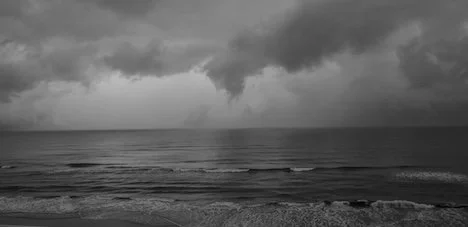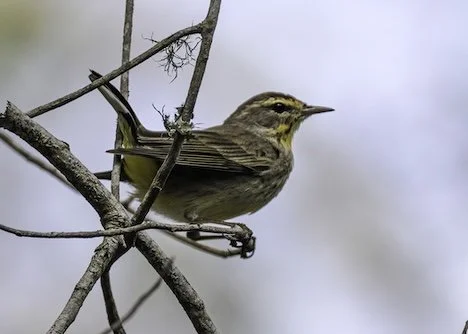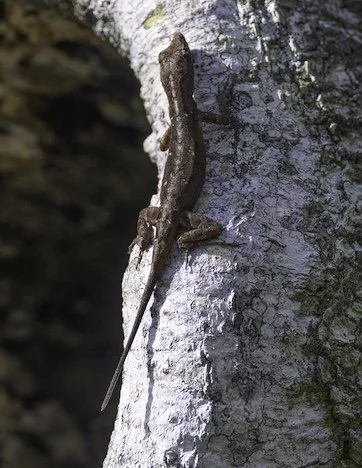After the storm….
One of the downsides of living in Florida (albeit part time) is coping with the ever-changing weather conditions. As is true elsewhere in the nation, the change in climate has resulted in anomalies in what we used to consider the “normal” weather patterns. This morning, we were awakened by the iPhone’s emergency weather alert. A Tornado Warning had been issued for our area and there was a strong possibility that it was headed in our direction- kind of rare for our area at this time of year. Fortunately, the path changed before it reached us and passed to our south. Nonetheless, we experienced some pretty heavy rain and stormy conditions as seen in the photo above.
With the passing of the storm, many small moisture-loving flying insects made their appearance in the woodlands. We had difficulty identifying the predominant species, but the birds could have cared less. Warblers are carnivorous and are exceptionally adept hunters on the wing. I had just entered the trailhead off Saxon Drive in New Smyrna when I encountered an assemblage of hungry warblers taking advantage of the large number of flying insects being served up. There were 4 species of warblers and a number of other birds all in the same tree. For photos, I only had to stand in one spot with the camera ready to fire away. One of the most common diners was this Palm warbler….one of many.
One of the earliest migrants to show up in Florida in spring is the Northern parula. A brightly colored photogenic bird, the first wave of these migrants appears in early March. This group will likely breed here in Florida and may even be on the nest already when a second major wave travels through the state on their way to more northerly breeding grounds. Warblers can be a tricky bird to photograph as they are diminutive as well as being constantly on the move. Everytime I made an attempt to capture an image of the bird, he would quickly take flight as if to taunt me. Eventually, I saw one peeking out from behind a tree. I swear, he was checking to see if I was still around trying to invade his privacy. I’ve entitled this image
”Peek-a-parula”
Warblers weren’t the only critters on the move after the storm. This small Brown anole, a lizard common to Florida, was found checking out the bark of a tree in search of its dinner which could be anything! These little guys are omnivores and will feed on bugs, vegetation, or even other lizards such as the native Green anole. Very often, when the Brown (aka Cuban) anole invade an area, their Green cousins will be harder for us to see. They tend to climb into a higher elevation of the trees where the Brown anoles do not generally inhabit making them more elusive to the Brown anole and to us humans.
Tech Tip - One real brief tech tip today. In a recent posting, I mentioned the advantages of using Black and white photography to capture more contrast and detail in certain circumstances. Such is the case when photographing storms. In the image at the beginning of this post, B&W imaging was used to convey just how dramatic the approaching storm really looked to me.



